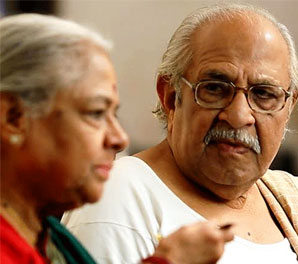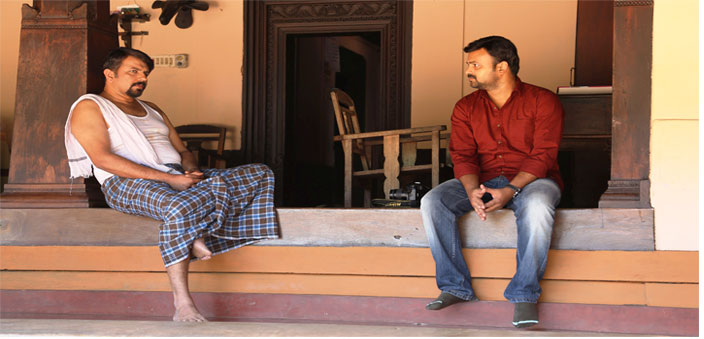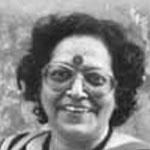Amixed medley of films in the Indian Select formed one of the three segments which featured at the Kolkota International Film Festival (KIFF). One of these was the section on International Cinema. The second was the NETPAC section which featured South Asian films and the third was the Indian Select with 12 regional language films including Hindi, and three Bengali feature films. The average quality of the films in the Indian Select was lower than what one has witnessed at previous KIFFs, which made the judging easier because there was hardly any competition for the citation from the Indian Film Critics Association whose three members formed the jury. But it was also sad because it reflected the less-than-average quality of the films though in terms of subject matter, most of them were original and unique.
The other problem with films chosen to participate in the Indian Select was that they had already bagged the National Award last year which is a top award and therefore, ought not to have been considered for this competition. The jury kept them out while making their decisions on the winning film. No strict regulations and norms were decided upon during the selection. Even FIPRESCI award winners of the last year were included in the section. The FIPRESCI award is a very prestigious award bestowed by a jury composed of members from FIPRESCI which is an international organisation of film critics, with its head quarters in Munich, Germany.
The jury ended up judging eleven films in all because four were excluded for reasons explained above. The language break-up of the 15 selected films was – three films in Bengali, one in Assamese, one in Hariyanvi, two in Kannada, two in Malayalam, two in Marathi, one in Odiya, one Punjabi, one Tamil and one Hindi.
The roll-call of select films
Several films were fictionalised features of biographies, mainly of lesser known individuals who have/had contributed significantly to their chosen channels of interest/endeavour, and set out examples for others to follow. The opening film Lokabandhu (Friend of the People) directed by Dhiraj Kashyap from Assam unfolded the life and struggles of Dr. Bhubaneswar Barua who was a physician who rushed to attend to critical patients and helped them in cash or kind if he found them in poor circumstances. But he was also a freedom fighter and a passionate philanthropist. But this film was steeped in long sermons, amateurish screenplay, and theatrically structured scenario, worsened by poor performances. The doctor’s supportive wife is so marginalised that she hardly has a line to say.

Saankal (Shackle) in Hindi directed by Dedpiya Joshi brings across the terrible truth of a concocted custom among some Muslim communitiesin Rajasthan. During the Partition, for those families who did not go across to Pakistan, the gender divide got tilted in favour of females. As a consequence, several girls remained single till a relatively older age. To get rid of the stigma that attaches to families where girls are unmarried, these communities devised a new custom of marrying off the girls to very young boys within the community so that there was no community cross over. This meant that a girl of 26 was married off against her will to a boy of eleven. That is just half the story.
After the marriage, this young bride was subjected to repeated rape by the men in her husband’s family including the boy’s father, uncles and so on with the support of the other women in the same family. Saankal narrates the story of one girl who grows to love her boy husband as he grows up, but who cannot rescue her from her torture. She commits suicide. The story sounds very powerful but the film is that much weak in terms of performance, presentation, music, acting and technique. The only good thing about the film is its subject matter and the picturesque backdrop of Rajasthan.
I am not a He, but She directed by B.S. Lingadevaru is a touching story about a boy who feels distinctly uncomfortable and imprisoned in a male body with a woman within him. His increasingly effeminate behaviour, body language and manner makes him a strange person to people close to him, but his empathetic sister tries to help him. But he moves away to the city and aligns himself with his inner desire to ‘become’ a woman. The film won two National Awards this year – for best actor (Vijay) and Best Make-up Artist (Raju, Nagara).
Ghar Aaja Jeetu (Punjabi) directed by Jaswant Mintu who also edited the film is produced by Dr. Jaswinder Singh Gandhi who wrote the story. Gandhi is a certified addiction specialist working with addiction medicine at the Amrit Drug Readdiction and Research Foundation for many years. “I decided to produce the film for drug addicts, especially for their families, whose lives are destroyed by the act of a single member will stop at nothing to get money for his drugs,” says Gandhi. The film stands out because it shifts focus to his two daughters who keep waiting for him to return to normal life. “They are compelled to walk on the razor’s edge and continue to burn in the flames of drug addiction though they have not done anything to face this destructive life,” Gandhi sums up.

Birds with Large Wings (Malayalam) is a feature-length documentary directed by Dr. Biju which depicts the after-effects of the spraying of pesticides presented from the point of view of a photographer who visits the affected people and the places several times in search of the truth. The film explores in great detail how people in general and children in particular were so seriously harmed by the pesticide filled with endosulfan which had violated all safety norms leading to distorted growth among kids since the last 12 years. However, the film was kept beyond the jury because it was a documentary film and not a feature film.

Last Page (Kannada) directed by Nikhilmanjoo Lingaiyah won the Best Film Prize in the Indian Select section. It is about an old couple who live alone with the wife doing all the household chores while the husband keeps nagging her endlessly. When he falls sick and has a surgery, he slowly becomes a different man and prepares for his wife’s comfort and livelihood if he were to die suddenly. But it is the wife who dies and he tries to cope by sharing the simple joys of living with the children in the neighbourhood. The message on empathy for senior citizens comes across only through suggestion and implication, and is never loud or crude.


